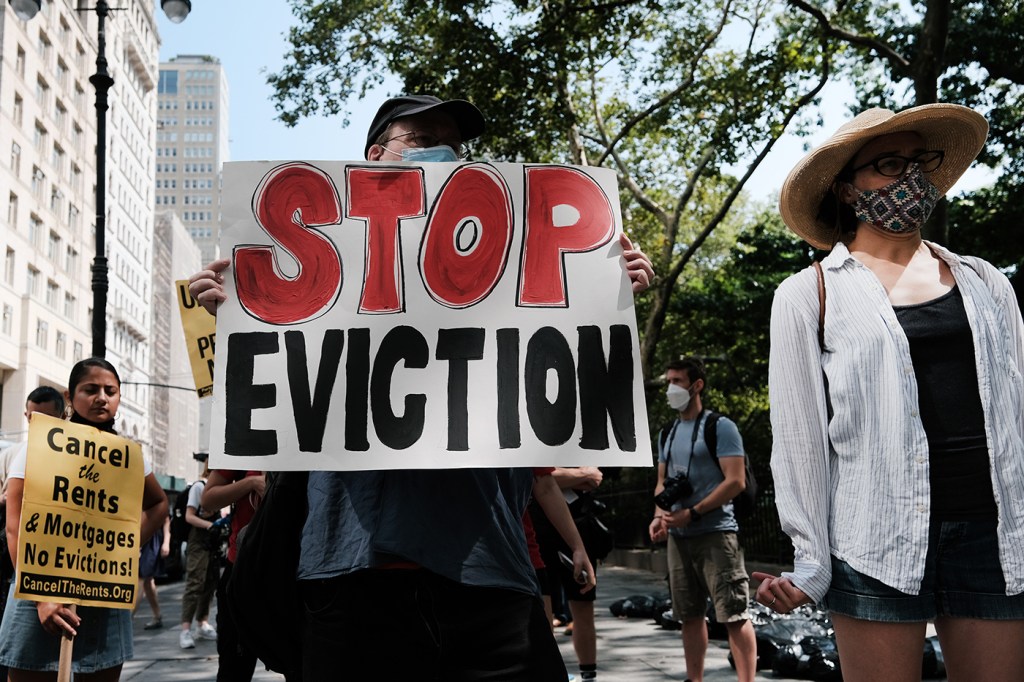No clear way forward for renters after Supreme Court lifts federal eviction moratorium during COVID-19 pandemic

The future for tens of millions of renters in the U.S. has grown suddenly darker now that the Supreme Court struck down a federal moratorium on evictions that served as a critical stopgap measure for countless communities devastated by the COVID-19 pandemic.
But what happens now, and when一how quickly courts process eviction filings and whether state and local governments will step in to assist renters一is not exactly clear, says Dan O’Brien, associate professor of public policy and urban affairs.
Housing experts have said that a tsunami of evictions would follow the end of the moratorium, but O’Brien says that given how long eviction proceedings normally take, such a backlog may be more of a dribbling out.

Left, Dan O’Brien, Associate Professor of Public Policy and Urban Affairs and Criminology and Criminal Justice; Director, Boston Area Research Initiative. Photo by Adam Glanzman/Northeastern University. Right, Director of Hybrid and Online Programs in the School of Law; Director of the Law and Public Policy Minor. Photo by Matthew Modoono/Northeastern University
Either way, the impact on society at large, as more people are evicted and forced into homeless shelters and in other congregate settings, is not good一particularly as the pandemic rages on and the highly contagious delta variant continues to spread, O’Brien says.
“People who are deeply vulnerable, and who had been made more vulnerable by the pandemic, are now basically awaiting sentencing, as it were,” he says. “An eviction is already a pretty bad thing to experience, to put it bluntly. Not only do you get kicked out, but you now have this black mark on your record.”
On Thursday, the Supreme Court issued an eight-page decision in response to the Biden administration’s emergency appeal of a lower court decision to strike down the moratorium, ruling that the Centers for Disease Control and Prevention, the federal agency that issued the freeze, had exceeded its authority.
It was the second CDC-issued ban on evictions since the pandemic began after the initial freeze expired at the end of July. The Supreme Court signaled, in a prior ruling on the first ban, that it considered the moratorium to be unlawful, issuing a 5-4 decision that sustained the law, with Justice Brett Kavanaugh only voting to sustain it to bide time for Congress to disburse rental assistance funds set aside under the American Rescue Plan. Kavanaugh noted in his opinion that he thought the moratorium to be unlawful.
The new August 3 order was more narrowly tailored to the parts of the U.S. where infection rates were highest, but questions remained as to whether it would pass legal muster.
Not only did it not do so, but most of the more than $46 billion in federally allocated rental relief remains tied up in bureaucracy. Roughly $5 billion had been distributed through July, according to data from last week. With Congress in a perpetual partisan gridlock, it’s unlikely that more aid is on the way, O’Brien says.
“There’s no clear way forward,” O’Brien says, noting that the pandemic could go on for years, which may entail prolonged economic hardship for millions of renters, many of whom live in communities of color and other marginalized areas already ravaged by the pandemic.
He says some cities, such as Philadelphia, have implemented measures that require landlords looking to evict tenants to go through mediation first, which has helped cut down on the number of evictions. These strategies could be critical moving forward, as municipalities discuss how to help shield tenants from the fallout in the face of potentially more legal challenges to further action, he says.
After all, housing issues are traditionally handled at the state level, says Dan Urman, who teaches constitutional law and the modern U.S. Supreme Court at Northeastern.
The high court’s ruling shed light on how the different branches of the federal government “work with and against one another” on such a pressing issue一one that’s fallen onto the administration’s lap due to the sheer scale and scope of those affected under pandemic conditions, Urman says.
“There’s really a larger story about which branches and levels of government make policy,” Urman says.
He says there’s another lesson to be learned about the ideological leanings of the Supreme Court.
“People talk about the court being political一it is not an accident that the Republicans are voting the way they are, and the Democrats are voting the way they are,” Urman says. “This is just another illustration of how the long-term conservative project to remake the Supreme Court specifically, and the federal courts in general, has real-world consequences.”
For media inquiries, please contact media@northeastern.edu.






